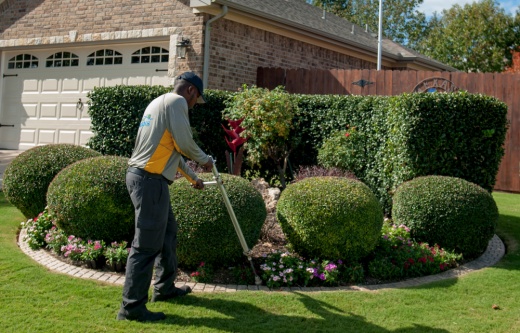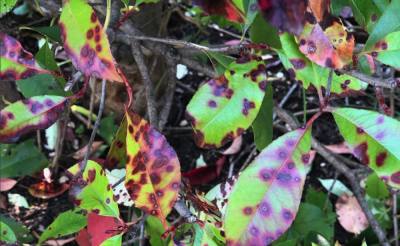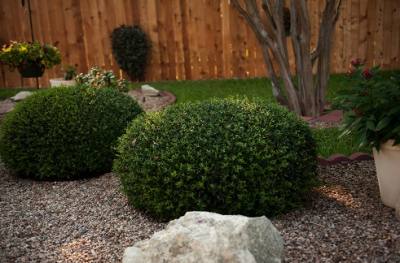Without landscaping, home exteriors would lack their character, natural beauty and charm. Achieving a healthier landscape by getting rid of pesky insects and diseased plants is no small feat in Central Texas, but the tree, shrub and pest control experts at Emerald Lawns make beautifying your lawn simple. Tree & Shrub Manager Russel Matthews and Branch Manager Cain Cooper suggest homeowners take the following five suggestions into consideration when tackling landscaping this year.
1. Manage diseases in your landscape
Want to avoid fungal, bacterial and algae diseases? First, assess how much water plants are receiving. Underwatering your trees and shrubs can make them more susceptible to fungus and insect issues, but Emerald Lawns specialists say overwatering is even more dangerous because it can actually end up killing the plant.
“It’s a common misconception that you should water a whole lot at one time, and that’s not true,” Matthews said. “With our limestone and clay soils, you really want to do low amounts of time when you’re watering. Ten to 15 minutes twice a week is my go-to.”
Another common error among homeowners is trimming shrubs drastically and adding more than three inches of mulch, both of which are catalysts for disease and pests.
“If you’re trimming something constantly, you’re knocking off the new growth all the time and making it burn more carbohydrates to regrow, and in turn making them efficiently more susceptible to insects and fungus issues,” Matthews said.
2. Find solutions to insect problems
In the spring as a pre-emergent for the insect season, Emerald Lawns staff spray a round of dormant oil treatment to plants that do not have foliage yet, which smothers overwintering insects and their eggs. Systemic insect control is maintained throughout the year using injectable fertilizers with pest control, routine maintenance applications, and alternating insecticides and fungicides to avoid resistance-building.
3. Fertilize root zones
After the dormant oil treatment and before routine maintenance applications begin, Emerald Lawn experts recommend root zone fertilization, a key tool used to anchor plant roots. A fertilizer lance is used to insert fertilizer into the feeder root area of the soil around the plant, which allows its roots to grow stronger.
“We’re really busy with the first spring root zone fertilization right now,” Cooper said. “[The next applications] are maintenance applications. Those are the ones where we’re coming out, checking everything, and applying insect and disease controls. Then we end the year again with a fall root zone fertilization.”
4. Make a year-round plan
Though the spring is an important time to give your landscape extra attention, year-round attention is vital in maintaining healthy trees, shrubs and plants. Emerald Lawns tree, shrub and pest specialists visit each home seven times a year to examine issues carefully and come up with unique plans to treat specific problems.
5. Control pests inside your home
Emerald Lawns recently announced the launch of its new home pest control services, which delivers premium curb-to-curb protection and enjoyment through extensive inspections, preparation and frequent visits from its licensed exterminators.
“Our approach is almost strictly exterior,” Cooper said. “If you’ve got something specific inside, I’m going to use a very small amount of bait instead of spraying everything in your house.”
While many home pest control services visit homes quarterly, Emerald Lawns conducts six lower-cost applications that ensure better results. Visit https://emeraldlawns.com/services/pest-control-services/ to find out more about how Emerald Lawns can help you fight Texas pests.
Interested in tips and tricks on how to make your lawn more lush? Check out Emerald Lawns’s 5 steps to a greener spring.
The above story was produced by Community Impact's Storytelling team with information solely provided by the local business as part of their "sponsored content" purchase through our advertising team. Our integrity promise to our readers is to clearly identify all CI Storytelling posts so they are separate from the content decided upon, researched and written by our journalism department.
Select your community
Support Us
News
- Austin Metro
-
Houston Metro
- Houston Metro Home
- Bay Area
- Bellaire | Meyerland | West University
- Conroe | Montgomery
- Cy-Fair | Jersey Village
- Cypress
- Heights | River Oaks | Montrose
- Katy | Fulshear
- Lake Houston | Humble | Kingwood
- New Caney | Porter
- Pearland | Friendswood | Manvel
- Spring | Klein
- Sugar Land | Missouri City
- The Woodlands
- Tomball | Magnolia
- Dallas | Fort Worth Metro
- San Antonio Metro








